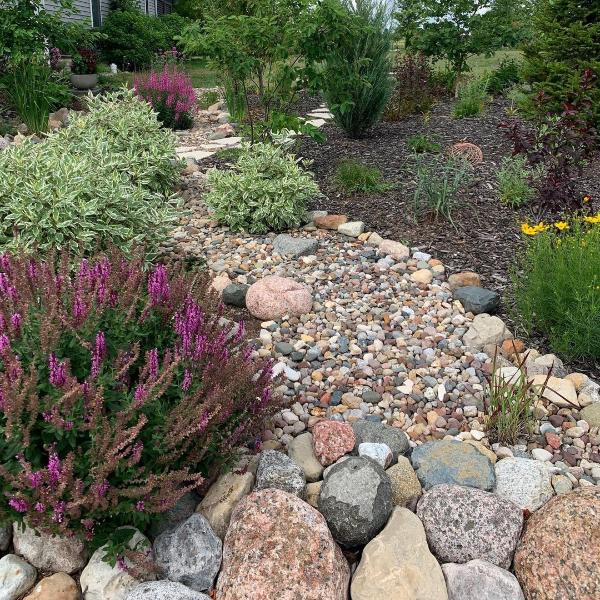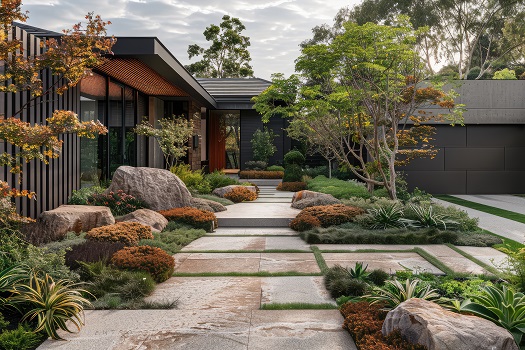Getting The Hilton Head Landscapes To Work
Getting The Hilton Head Landscapes To Work
Blog Article
Excitement About Hilton Head Landscapes
Table of ContentsThe smart Trick of Hilton Head Landscapes That Nobody is DiscussingExcitement About Hilton Head LandscapesWhat Does Hilton Head Landscapes Do?The Greatest Guide To Hilton Head LandscapesThe Facts About Hilton Head Landscapes UncoveredOur Hilton Head Landscapes IdeasThe 2-Minute Rule for Hilton Head LandscapesSome Ideas on Hilton Head Landscapes You Need To Know
Type compatibility is likewise a major part of unity in designone or more noticeably various forms benefit contrast and emphasis, yet generally all various other types need to have some similarities for a combined look. Texture refers to how crude or great the surface of the plant or hardscape product really feels and/or looks.
Examples of plants with crude structure include philodendrons, agaves, bromeliads, hollies, hands, and hydrangeas. Attributes that produce fine structure include little foliage; slim, strappy leaves (yards) or high, thin stems; small, thick branches and small branches; long stems (creeping plants); and tiny, fragile blossoms.
What Does Hilton Head Landscapes Do?
Many plants are moderate texture, in that they can not be explained as having either rugged or great structure. They are defined by medium-sized fallen leaves with simple forms and smooth edges. The average-sized branches are not largely spaced neither widely spaced, and the overall type is typically rounded or mounding. Medium-textured plants work as a background to link and merge the coarse- and fine-textured plants.

To make a room feel smaller, place the rugged appearances along the external border and the great textures closest to the viewer. The detail of the coarse appearance makes the plants show up closer and makes the room really feel smaller sized. The perceived texture of plants can also transform with the distance from the plant.
All About Hilton Head Landscapes
Bold colors increase the comparison and make the structure appear coarser, while muted shades can squash texture. Hardscape with a rugged texturesuch as very harsh rocks and strong, huge timberstends to make all plant material appear extra moderate distinctive. Designers commonly develop a texture study (Number 8) on paper to aid determine the plan of plant materials.
Figure 8. Texture research. Color in plant material and hardscape includes interest and selection to the landscape. Color is the most obvious aspect in the landscape and is usually the emphasis of many homeowners; however, it is likewise the most short-term aspect, usually lasting just a couple of weeks a year for individual plants.
What Does Hilton Head Landscapes Mean?
An easy description of the shade wheel includes the three primaries of red, blue, and yellow; the three second shades (a mix of two primaries) of green, orange, and violet; and six tertiary colors (a mix of one nearby main and additional shade), such as red-orange. Shade theory discusses the partnership of shades to every other and exactly how they need to be utilized in a structure.

Analogous (often called unified) color pattern are any type of three to 5 shades that are adjacent on the color wheel, such as red, red-orange, orange, yellow-orange, and yellow, or blue, blue-violet, and violet (landscape design hilton head). The shades belong per various other because they generally include two key shades blended to create a second and two tertiary colors, which means they share common residential properties
Corresponding shades are usually found normally in flowers; a common pair is yellow and violet. Color is located in the blossoms, foliage, bark, and fruit of plants.
7 Easy Facts About Hilton Head Landscapes Shown
Eco-friendly vegetation in all its different shades is the leading color by amount, yet other shades capture interest much more readily as a result of their high contrast to the shade environment-friendly. Color is likewise located in buildings, rocks, pavers, timber, and furniture. A lot of colors in natural materials, such as rock and timber, are commonly muted and often tend to be variants of brownish, tan, and pale yellow.
Color is a crucial component for developing interest and range in the landscape. Shades have residential or commercial properties that can impact feelings, spatial assumption, light quality, balance, and emphasis. One residential property of shade is described relative to temperaturecolors appear to be trendy or cozy and can influence feelings or feelings. Amazing colors have a tendency to be soothing and ought to be used in areas for relaxation and serenity.
The Basic Principles Of Hilton Head Landscapes
Cool shades tend to decline and are viewed as being further away, making a space feel larger. Shade can likewise be utilized to catch interest and straight views.
As an example, bright yellow, which has the greatest strength, likewise has a high contrast with all various other shades (commonly referred to as a "pop" of color) and must be conserved. A percentage of extreme shade has as much visual weight as a big quantity of a more restrained or weak color.
Similar (in some cases called harmonious) shade plans are any type of 3 to five shades that are surrounding on the color wheel, such as red, red-orange, orange, yellow-orange, and yellow, or blue, blue-violet, and violet. The colors belong to each other due to the fact that they generally consist of 2 primary colors mixed to create an additional and two tertiary shades, which suggests they share common buildings.
An Unbiased View of Hilton Head Landscapes
Complementary shades are commonly discovered naturally in flowers; an usual set is yellow and violet. Color is discovered in the blossoms, foliage, bark, and fruit of plants.
Environment-friendly vegetation in all its various tones is the leading color by quantity, but other colors capture attention quicker as a result of their high contrast to the shade eco-friendly - landscape design hilton head - https://triberr.com/h1tnhdlndscps. Shade is likewise found in buildings, rocks, pavers, timber, and furniture. Most colors in all-natural materials, such as rock and wood, are usually soft and often tend to be variants of brown, tan, and light yellow
Hilton Head Landscapes - Questions
Colors have buildings that can affect feelings, spatial perception, light high quality, equilibrium, and emphasis. Amazing shades have a tendency to be relaxing and must be made use of in locations for relaxation and calmness.
Great shades often tend to decline and are viewed as being farther away, making an area feel larger. Color can additionally be made use of to record focus and direct views - https://sitereport.netcraft.com/?url=https://www.hiltonheadlandscapes.com.
Brilliant yellow, which has the highest strength, likewise has a high contrast with all other colors (commonly defined as a "pop" of shade) and should be utilized moderately. A landscape design hilton head small amount of intense color has as much visual weight as a huge quantity of a much more controlled or weak color.
Report this page